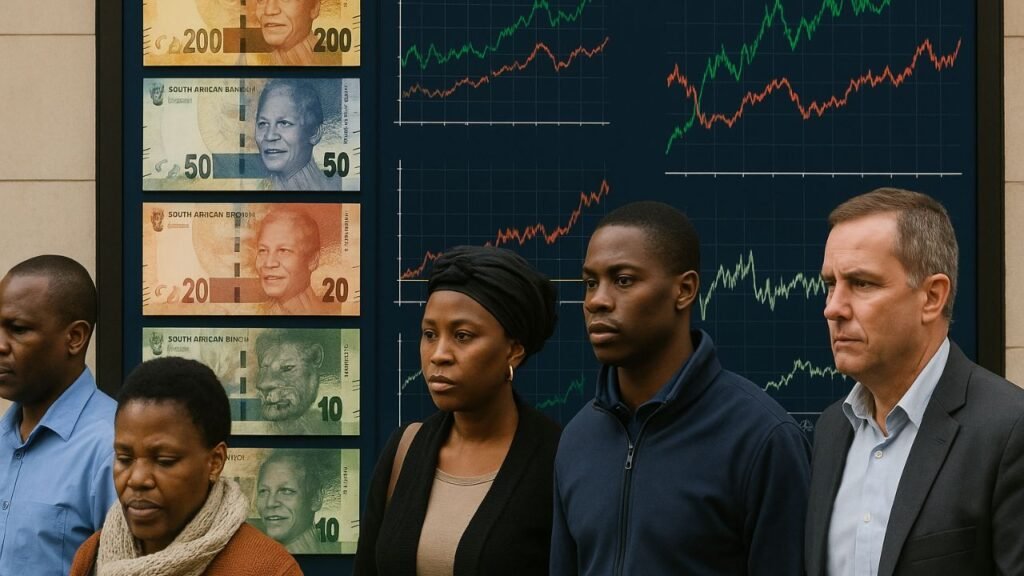Rand Softer Before GDP Data – The South African Rand has experienced a softer trading session ahead of the release of the latest GDP data, reflecting cautious sentiment among investors. Analysts have highlighted that the currency’s weakness is primarily driven by expectations of modest economic growth in the upcoming quarter. As South Africa’s economy faces pressures from rising inflation, electricity supply constraints, and labor disputes in key sectors, the rand is responding to market uncertainties with increased volatility. International investors are closely monitoring macroeconomic indicators, while domestic financial institutions prepare forecasts based on anticipated performance across sectors such as mining, manufacturing, and agriculture. The rand’s movements are also influenced by external factors, including the strength of the US dollar and global commodity prices, which have a direct impact on South Africa’s export-driven economy. Market participants are looking toward official data to gauge whether policy interventions by the South African Reserve Bank and fiscal measures by the government are sufficient to sustain growth. Experts recommend caution for short-term traders as volatility may persist until GDP figures are confirmed. For more insights on the South African economy and currency trends, see Reuters Currencies and Bloomberg Currency Markets.

Analysts Anticipate Modest GDP Growth Amid Economic Challenges
Economic analysts have forecasted modest growth for South Africa’s GDP in the coming quarter, citing persistent structural challenges in the economy. Key sectors such as mining, manufacturing, and services have shown signs of recovery, but these gains are offset by disruptions in energy supply, labor unrest, and inflationary pressures. The mining sector, a critical contributor to export revenues, has faced intermittent strikes, while the electricity shortage has constrained production in manufacturing and industry. Economists expect GDP growth to hover around 1.2% to 1.5%, reflecting a cautious optimism despite the adverse conditions. Policymakers are under pressure to implement reforms that stimulate private investment, enhance infrastructure efficiency, and stabilize consumer confidence. The Reserve Bank’s monetary policies, including interest rate adjustments, are designed to manage inflation while supporting growth. Investors and financial institutions are analyzing these projections closely, as they guide portfolio adjustments and hedging strategies. For detailed analyses and expert commentary on South African economic growth, refer to World Bank South Africa Overview and IMF South Africa Reports.
Rand Volatility Influenced by Domestic and Global Factors
The South African Rand’s fluctuations reflect a combination of domestic economic uncertainty and global market dynamics. Domestically, investors are wary of slow fiscal reforms, the high unemployment rate, and power supply disruptions, all of which can constrain economic output and investor confidence. Globally, a strong US dollar, rising interest rates in developed economies, and fluctuating commodity prices amplify pressure on the rand. These factors have led to a more cautious trading environment, with currency traders hedging positions and adjusting exposure to emerging market risk. The rand’s volatility is expected to continue until the GDP release clarifies the underlying economic trajectory. Analysts also note that South Africa’s reliance on commodity exports, such as gold, platinum, and agricultural products, makes the currency particularly sensitive to global demand shifts. Short-term investors are advised to monitor exchange rates, as sudden swings could create both risks and opportunities in trading. For further currency insights, see Financial Times Currencies and CNBC Currency News.
Impact of Energy Constraints on Economic Performance
Energy supply limitations, especially from Eskom, continue to weigh heavily on South Africa’s economic growth prospects. Frequent load-shedding has disrupted industrial production, manufacturing output, and service delivery, contributing to slower GDP growth expectations. Analysts emphasize that without substantial improvements in energy infrastructure and management, these constraints will persist as a key factor influencing investor sentiment and currency strength. Businesses are increasingly incorporating energy risk into operational planning, while the government seeks partnerships to stabilize supply. The Reserve Bank and policymakers are also considering the broader economic implications, as energy shortages affect productivity, employment, and overall investor confidence. Market participants are closely watching any announcements from Eskom and the Department of Energy for potential relief measures. Understanding the interplay between energy constraints and economic performance is critical for anticipating trends in the rand and broader financial markets. For more on energy impacts in South Africa, visit Engineering News Energy Reports and ESI Africa.
Investor Sentiment and Future Outlook
Investor sentiment remains cautious as market participants await the official GDP data. A softer rand has prompted portfolio adjustments, with many investors reallocating funds into safer assets or hedging against currency risk. Analysts indicate that while South Africa faces near-term challenges, including inflationary pressures, labor unrest, and energy constraints, structural reforms and strategic fiscal measures could stabilize growth in the medium term. International investors are monitoring macroeconomic indicators such as trade balance, foreign direct investment, and government expenditure to assess the resilience of the economy. The rand’s performance over the coming weeks will serve as a barometer for confidence in South Africa’s growth trajectory. For ongoing market updates and investment strategies, consult Investing.com Currencies and MarketWatch Currency Tools.








